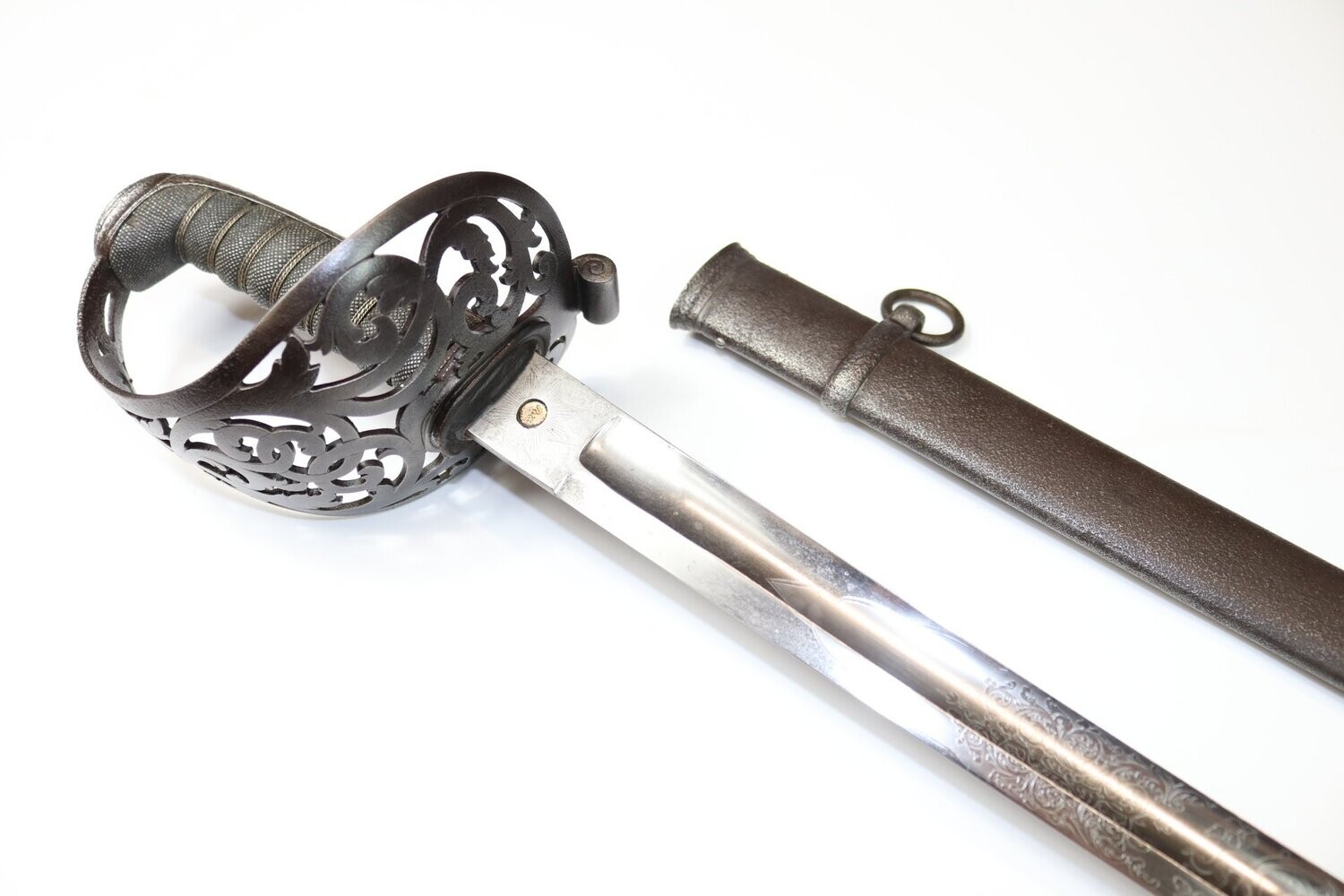Very Rare Scroll Hilted Sword for "The Queen's Hundred"
ELC1072 - An extremely rare sword, featuring a very unusual (unique?) pattern of scroll guard, and etched with the royal motto "Dieu et mon Droit" on one side and "The Queen's Hundred" on the other side, together with the usual floral and VR etching found on regular officers' swords. While this has the look of a cavalry officer's sword, it is far from clear which 'Queen's Hundred' this refers to.
The famous "Queen's Hundred" was a shooting prize (part of the Queen's Prize) awarded to the best shooters by the National Rifle Association (NRA) at Bisley. However, having communicated with the NRA museum curator, they have no record of a sword ever being awarded as a prize when the competition was running, and this sword does not have any other NRA or shooting clues in the etching (though it could conceivably been awarded as a non-NRA personal/regimental gift to someone who had qualified for the Queen's Hundred). Nevertheless, to most Victorian people, this was what "The Queen's Hundred" was.
The etching of the blade does however feature is a pair of crossed lances, and this perhaps connects to the other possibility: in 1855 the newspapers (see attached example) report that in Banff (in Aberdeenshire, Scotland) there was a proposal to raise a body of volunteer lancers (yeomanry), to be called The Queen's Hundred. I can find no record of this corps after 1855, and no confirmation that it was actually created, but it is possible that this sword is somehow associated with that. Therefore there is scope for further research with this sword.
The bright blade has clear etching and the hilt is firm on the tang. The scroll guard and scabbard share a similar level of light pitting and very dark patina. The maker's slug is clear and suspected to be Rogers & Co. With its custom steel scroll guard, cut out by hand to a special design, this would have been a relatively expensive sword at the time. The nature of the guard, and the stepped pommel, mean that this is not specific to any branch of Army service, and could have been carried by an officer of cavalry, infantry/rifles, or artillery.

